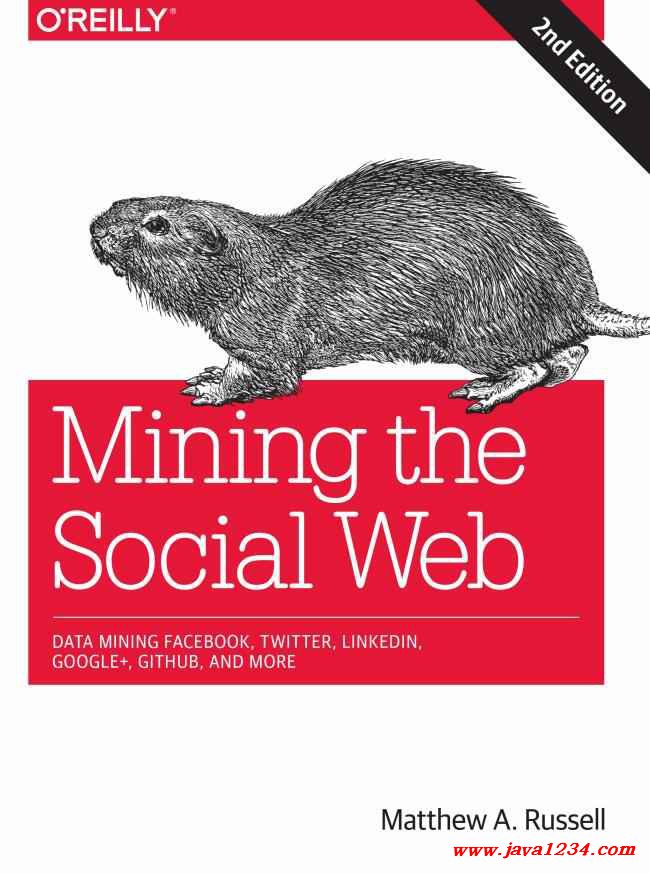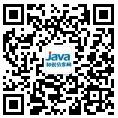| 失效链接处理 |
|
OReilly Mining the Social Web 2nd Edition PDF 下载
本站整理下载:
提取码:0lpf
相关截图:

主要内容:
README.1st
This book has been carefully designed to provide an incredible learning experience for
a particular target audience, and in order to avoid any unnecessary confusion about its
scope or purpose by way of disgruntled emails, bad book reviews, or other misunder‐
standings that can come up, the remainder of this preface tries to help you determine
whether you are part of that target audience. As a very busy professional, I consider my
time my most valuable asset, and I want you to know right from the beginning that I
believe that the same is true of you. Although I often fail, I really do try to honor my
neighbor above myself as I walk out this life, and this preface is my attempt to honor
you, the reader, by making it clear whether or not this book can meet your expectations.
Managing Your Expectations
Some of the most basic assumptions this book makes about you as a reader is that you
want to learn how to mine data from popular social web properties, avoid technology
hassles when running sample code, and have lots of fun along the way. Although you
could read this book solely for the purpose of learning what is possible, you should know
up front that it has been written in such a way that you really could follow along with
the many exercises and become a data miner once you’ve completed the few simple steps
xiii
to set up a development environment. If you’ve done some programming before, you
should find that it’s relatively painless to get up and running with the code examples.
Even if you’ve never programmed before but consider yourself the least bit tech-savvy,
I daresay that you could use this book as a starting point to a remarkable journey that
will stretch your mind in ways that you probably haven’t even imagined yet.
To fully enjoy this book and all that it has to offer, you need to be interested in the vast
possibilities for mining the rich data tucked away in popular social websites such as
Twitter, Facebook, LinkedIn, and Google+, and you need to be motivated enough to
download a virtual machine and follow along with the book’s example code in IPython
Notebook, a fantastic web-based tool that features all of the examples for every chapter.
Executing the examples is usually as easy as pressing a few keys, since all of the code is
presented to you in a friendly user interface. This book will teach you a few things that
you’ll be thankful to learn and will add a few indispensable tools to your toolbox, but
perhaps even more importantly, it will tell you a story and entertain you along the way.
It’s a story about data science involving social websites, the data that’s tucked away inside
of them, and some of the intriguing possibilities of what you (or anyone else) could do
with this data.
If you were to read this book from cover to cover, you’d notice that this story unfolds
on a chapter-by-chapter basis. While each chapter roughly follows a predictable tem‐
plate that introduces a social website, teaches you how to use its API to fetch data, and
introduces some techniques for data analysis, the broader story the book tells crescendos
in complexity. Earlier chapters in the book take a little more time to introduce funda‐
mental concepts, while later chapters systematically build upon the foundation from
earlier chapters and gradually introduce a broad array of tools and techniques for mining
the social web that you can take with you into other aspects of your life as a data scientist,
analyst, visionary thinker, or curious reader.
Some of the most popular social websites have transitioned from fad to mainstream to
household names over recent years, changing the way we live our lives on and off the
Web and enabling technology to bring out the best (and sometimes the worst) in us.
Generally speaking, each chapter of this book interlaces slivers of the social web along
with data mining, analysis, and visualization techniques to explore data and answer the
following representative questions:
• Who knows whom, and which people are common to their social networks?
• How frequently are particular people communicating with one another?
• Which social network connections generate the most value for a particular niche?
• How does geography affect your social connections in an online world?
xiv | Preface
• Who are the most influential/popular people in a social network?
• What are people chatting about (and is it valuable)?
• What are people interested in based upon the human language that they use in a
digital world?
The answers to these basic kinds of questions often yield valuable insight and present
lucrative opportunities for entrepreneurs, social scientists, and other curious practi‐
tioners who are trying to understand a problem space and find solutions. Activities such
as building a turnkey killer app from scratch to answer these questions, venturing far
beyond the typical usage of visualization libraries, and constructing just about anything
state-of-the-art are not within the scope of this book. You’ll be really disappointed if
you purchase this book because you want to do one of those things. However, this book
does provide the fundamental building blocks to answer these questions and provide a
springboard that might be exactly what you need to build that killer app or conduct that
research study. Skim a few chapters and see for yourself. This book covers a lot of ground.
Python-Centric Technology
This book intentionally takes advantage of the Python programming language for all of
its example code. Python’s intuitive syntax, amazing ecosystem of packages that trivialize
API access and data manipulation, and core data structures that are practically JSON
make it an excellent teaching tool that’s powerful yet also very easy to get up and running.
As if that weren’t enough to make Python both a great pedagogical choice and a very
pragmatic choice for mining the social web, there’s IPython Notebook, a powerful, in‐
teractive Python interpreter that provides a notebook-like user experience from within
your web browser and combines code execution, code output, text, mathematical type‐
setting, plots, and more. It’s difficult to imagine a better user experience for a learning
environment, because it trivializes the problem of delivering sample code that you as
the reader can follow along with and execute with no hassles. Figure P-1 provides an
illustration of the IPython Notebook experience, demonstrating the dashboard of note‐
books for each chapter of the book. Figure P-2 shows a view of one notebook.
|




 苏公网安备 32061202001004号
苏公网安备 32061202001004号



